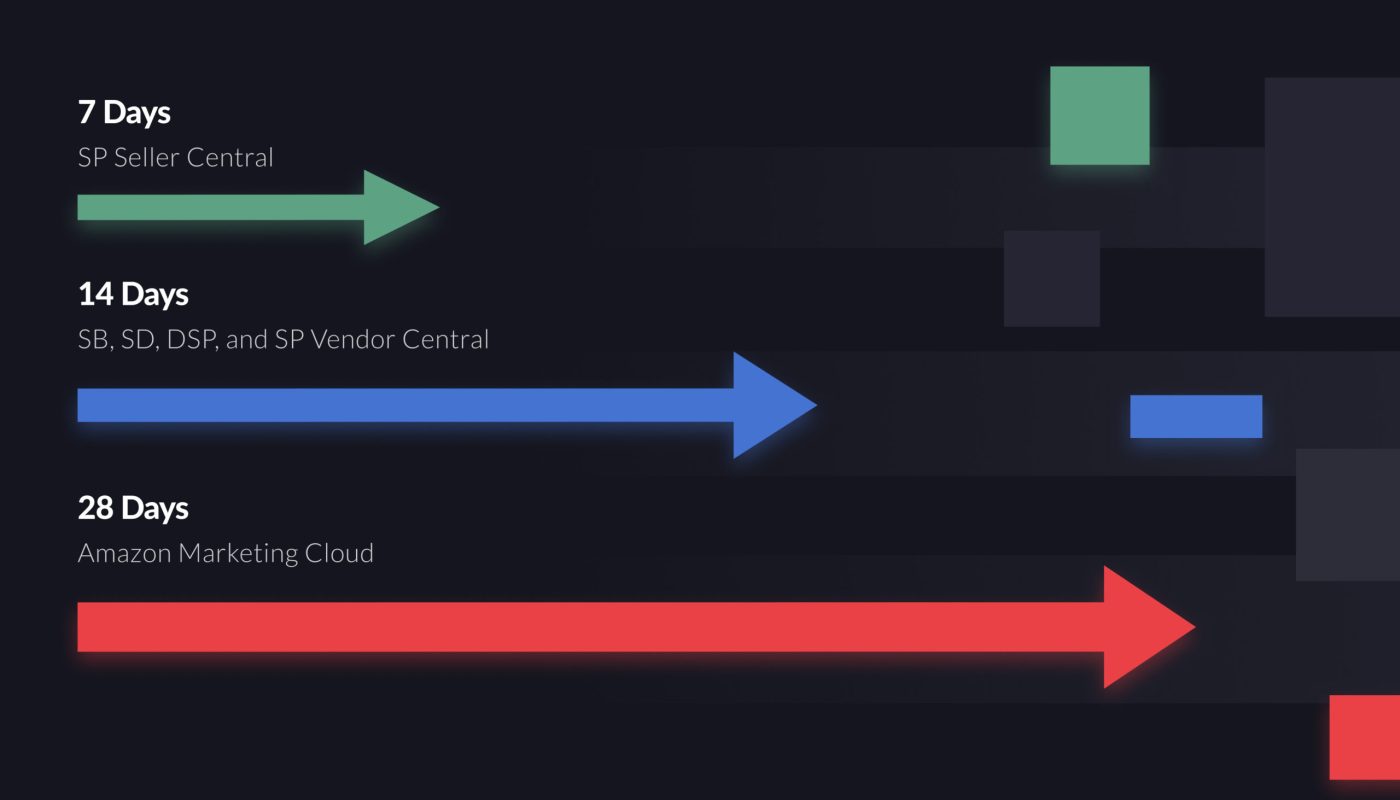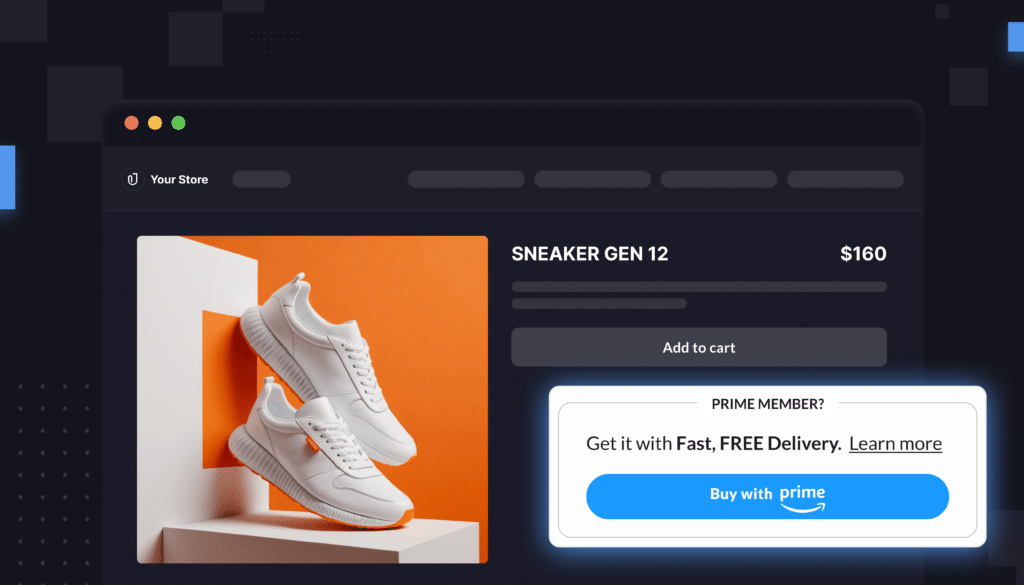When you pull up your Amazon Ads account, one of the first metrics you will see is how many sales your ads generated.
But many brands I speak to wonder: How, exactly, does Amazon define a sales conversion in the first place? And how long after a customer interacts with an ad does a sale still get counted?
The answer involves understanding Amazon’s attribution windows, which are essentially the periods of time when Amazon will still mark a sale as a conversion.
So how do Amazon’s attribution windows work? It’s all a little more complicated than you might think. I wanted to take some time to outline it here.
How does Amazon attribute a sale?
The first thing to know is that Amazon generally uses a last-touch attribution model.
It doesn’t matter if Customer A interacts with three of your ads before making a purchase. Regardless of how many ads Customer A sees, only the final ad they clicked before converting gets the credit for the sale.
Last-touch attribution is always the default on Amazon. This is true not just for the regular Amazon sponsored ads (Sponsored Products, Sponsored Brands, and Sponsored Display) but also for all Amazon DSP ads.
If you want to switch attribution models, however, there’s now a way to do it. I’ll get to that in a minute.
Seller vs. vendor account? Your attribution model might vary
The attribution window measures the length of time after a customer interacts with your ad during which Amazon will still credit a sale back to that ad. If a shopper buys from you after the attribution period has passed, then your ad won’t get credit for that sale.
The length of your attribution window can depend a lot on which type of Amazon account you have. We see this with Sponsored Products ad campaigns:
- For Sponsored Products ads, if you have a Seller Central account, Amazon only attributes sales that happen within 7 days after an ad click.
- If you have a Vendor Central, meanwhile, Amazon uses a 14-day attribution window for Sponsored Products ads.
For the other major Amazon ad categories—Sponsored Brands, Sponsored Display, and Amazon DSP—the attribution window is the same regardless of whether you have a Vendor Central or Seller Central account.
For all of these ad formats (SB, SD, and DSP), Amazon tracks sales that happen up to 14 days after a click.
What is the attribution window for Sponsored Display ads?
One unique aspect of specifically Sponsored Display ads is that you can use your own attribution model depending on your needs.
You can pick between a standard click-based attribution model (CPC model) like the one used for Sponsored Products ads. Or you can opt for an impressions-based model, called VCPM.
What’s the deal with VCPM? VCPM stands for viewable cost per mile. Rather than clicks, Amazon will charge you for every 1,000 viewable impressions. “A viewable impression” is counted as long as an ad shows up on a shopper’s screen, even if it’s just a portion of the screen, for the full second.
We bring up VCPM ads because they often unfairly get fully credit for sales that your other ads did the heavy lifting on.
Many Sponsored Display ads show up on your own product detail page. So on a VCPM model, that Sponsored Display ad gets full credit for a sale, even if it was another ad that got the shopper to click the page in the first place.
Can you tweak Amazon’s attribution model?
As we discussed, Amazon’s default attribution model is last-touch—but that doesn’t mean you can’t ever change it.
With new tools like Amazon Marketing Cloud (AMC), you can choose between three different attribution models:
- First-touch attribution, which, in contrast to the last-touch default, gives the credit for a sale back to the first ad that a customer clicked.
- Equal-weight attribution, which assigns equal credit for a sale to every ad a customer interacted with in their shopping journey.
- Position-based attribution, where you can assign a custom weight to both the first and last ads. Rather than one ad getting 0% credit and another getting 100% credit, you can assign, say, the first ad 20% credit and the last one 80% credit.
These final two models—equal-weight and position-based attribution—are examples of multi-touch attribution. With multi-touch attribution, every ad that a customer interacted with will get partial credit for a purchase.
Still stuck? Intentwise can also run an AMC query to help you determine how many of your conversions come from multiple touchpoints. We can tell you: If you adopt a multi-touch attribution model, will it give you a new understanding of which of your ad campaigns were a success?
What if I wanted to make my attribution window longer?
If you sell an expensive product that tends to have a long sales cycle, Amazon’s default attribution window of 14 days probably feels like too short of a cutoff.
Let’s say you’re a jewelry brand. Plenty of shoppers will take longer than 14 days to make a purchase from you. But under Amazon’s default attribution system, your ads won’t get credit for those sales.
There’s good news: In AMC, you can now increase your attribution window up to 28 days for all of your Amazon ads.
To access this 28-day attribution window, you have to run a SQL query within AMC. When you do this, you should expect one of two results:
- You might run this query in AMC and find that your 28-day attribution window produces roughly the same number of sales as your 14-day attribution window. That means your brand probably has a short sales cycle: Nearly all of your customers bought a product from you within two weeks of seeing your ad.
- Alternatively, you might discover that a significant proportion of your customers took as many as three or four weeks to buy your product after seeing your ad. The longer attribution window might tell you that your ad was actually successful—it just took longer than 14 days to prove out. And you wouldn’t have known it without using AMC.
The latter example is why understanding your attribution model is so critical. When you change how you attribute a sale, it can impact how you understand the success of your ad campaigns.
Staying on top of the attribution model that makes the most sense for you—last-touch vs. multi-touch, say, or 14 days vs. 28 days—is a key part of becoming a sophisticated advertiser.








